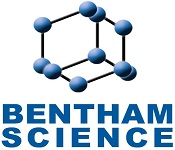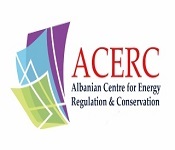Green Technologies 2018
About conference
About Conference
EuroSciCon welcomes you to attend the 7th Edition of International Conference on Green Energy, Green Engineering, and Technology during September 20-21, 2018 at Berlin, Germany. We cordially invite all the participants interested in sharing their knowledge and research in the area of Green energy, Renewable energy and Environmental sciences etc..
Green Technologies 2018 provides a platform for researchers/scientists to share and globalize their research work while the participants from industry can promote their products thus felicitating dissemination of knowledge. We anticipate more than 300 participants around the globe with thought-provoking keynote lectures, oral and poster presentations. The attending delegates include Editorial Board Members of related journals. The scope of Green Technologies 2018 is to bring the advancements in the field of Renewable Energy and Environmental Sciences.
Why to attend?
Meet the eminent researchers working in the areas of Renewable Energy and Technology. This conference will be the best platform to explore your research work and innovations in the respective areas. This conference is focused on all the major fields of Green Energy.
With members from around the world focused on learning about Green Energy, this is your single best opportunity to reach the largest assemblage of participants from various communities, conduct demonstrations, distribute information, meet with current and potential speakers and receive recognition at this two days event. The hallmark of this conference is our world-renowned speakers, Organizing Committee Members, Researchers and Scientists, Training Institutes, Universities and Colleges Students, Companies, Business Entrepreneurs, Self-help group facilitators, Social workers, Teachers, Business delegates and Young researchers the most recent techniques, latest advancements updates in Green Energy field.
Opportunities for Conference Attendees:
For Researchers &Faculty:
- Speaker Presentations
- Poster Display
- Symposium Hosting
- Workshop Organizing
For Universities, Associations & Societies:
- Association Partnering
- Collaboration Proposals
- Academic Partnering
- Group Participation
For Students & Research Scholars:
- Poster Competition (Winner will get Best Poster Award)
- Young Researcher Forum (YRF Award to the best presenter)
- Student Attendee
- Group Registrations
For Business Delegates:
- Speaker Presentations
- Symposium Hosting
- Book Launch event
- Networking Opportunities
- Audience Participation
For Companies:
- Exhibitor and Vendor Booths
- Sponsorships Opportunities
- Product launch
- Workshop Organizing
- Scientific Partnering
- Marketing and Networking with clients
Topics:
- Green Chemistry
- Green Nanotechnology
- Sustainable Development
- Energy Storage & Conversion
- Green Architecture
- Green Revolution
- Environmental Chemistry and Pollution Control
- Green Economy
- Market Research on Green Energy
- Green Technology & Energy Science
- Bioremediation
- Green Engineering
- Energy and Environment
- Renewable Energy
- Global Warming
- Bioenergy
- Biomass and Biofuels
Sessions/Tracks
Track 1: Green Chemistry
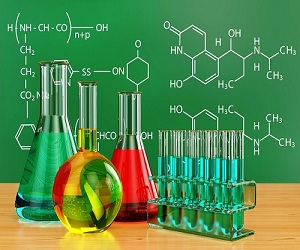
It is the design of chemical products and processes that reduce or eliminate the use of perilous substances. Green Chemistry is also focused is on the sustainability of the environment. Green Chemistry is an absolute approach to the way that products are made. It is applicable to the life cycle of a chemical product, including its design, manufacture, use, and ultimate disposal. New and innovative Design for Degradation is taken as an important topic to discuss in the present era.
- Industrial application of Green Chemistry
- Applications of green chemistry in organic synthesis
- Principles of Green Chemistry
- Green fertilizers
- Energy efficiency
Track 2: Green Nanotechnology

Nanotechnology involves the manipulation of materials at the scale of the nanometer, one billionth of a meter. Some scientists believe that mastery of this subject is forthcoming that will transform the way that everything in the world is manufactured. Green Nanotechnology is the mainly applicable to green chemistry and green engineering principles to this field. It has been described as the development of clean technologies, to minimize potential environmental and human health risks associated with the manufacture and use of nanotechnology products. Nano-products that is more environmentally friendly throughout their lifecycle.
- Solar cells
- Practical fuel cells
- Environmental friendly batteries
- Nanomaterials
- Nanoscale membrane
- Energy applications of nanotechnology
Track 3: Sustainable Development

The realization that increases in consumption after World War II was causing an equally massive generation of waste products for which there was little technology or public policy to address spawned the original environmental movement with its emphasis on reducing ground, air and water pollution. Policies and technologies were created to address pollution; it became clear that the real long-term goal must be to ultimately establish a fully sustainable planet: one that could perpetually sustain itself in its present form through better management of its resources. This would require efforts on several technological fronts. 1st products needed to be designed and built with an eye towards eliminating wasteful materials used and the reuse and recycling of the materials that are used once the product has exhausted its useful life. 2nd reliance on difficult to replenish resources from timber to oil needed to be drastically reduced through the development of new recyclable advanced materials.
- Additive Manufacturing & 3D Printing
- Energy Conservation
- Solid State Lighting
- Environmental Remediation
- Reducing Consumer Waste
Track 4: Energy Storage & Conversion
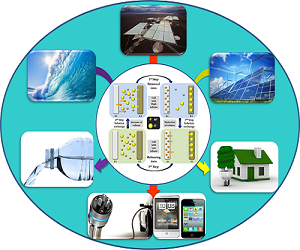
Materials hold the key too many advanced energy technologies including solar cells, batteries, fuel cells, and catalysis. With the increasing need for cost-efficient methods for Energy Storage and Conversion, it has become imperative to accelerate the rate at which energy-related materials are developed.
- Artificial photosynthesis
- Fossil fuel storage
- Phase change materials (PCM)
- Hydrogen and fuel cell technologies
- Carbon sequestration
- Thermomagnetic conversion
- Gasification Hydropower
- Electrochemical (Battery Energy Storage System, BESS)
Track 5: Green Architecture
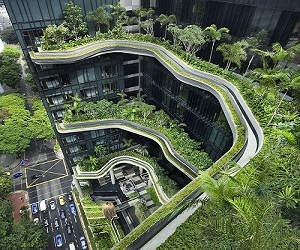
It is design and construction with the environment in mind. Green architects generally work with the key concepts of creating an energy efficient, environmentally friendly house. Natural ecology of the planet should be the macro model for architects to use as a model for a green building. Architecture can model itself on the planetary system to copy the natural green environment, making a new building, or by adapting an existing building, both environmentally friendly, in terms of materials used and the space it occupies, and energy efficient, including solar technology.
- Green Architecture and Design
- Energy efficient
- Environmentally friendly residences
- The Rise of Eco-Awareness
- Principles of Building Green
Track 6: Green Revolution
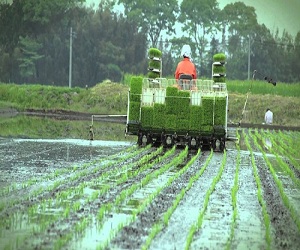
It’s a period when the productivity of global agriculture increased drastically as a result of new advances, was a very important period in agricultural history. It had several benefits; the Green Revolution also had some negative effects on the society and environment. So continues increase in agricultural production is called Green revolution. The large increase in agricultural production due to mechanized agriculture, use of the High yielding variety of seeds, use of chemical fertilizers and plant protection by spraying pesticides, etc. is called Green Revolution.
- Chemical fertilizers
- Synthetic herbicides
- High-yield crops
- Multiple cropping
Track 7: Environmental Chemistry and Pollution Control

Environmental Chemistry is the study of chemical processes occurring in the environment which is impacted by humankind's activities. These impacts may be felt on a local scale, through the presence of urban air pollutants or toxic substances arising from a chemical waste site, or on a global scale, through depletion of stratospheric ozone or global warming. The focus in our courses and research activities is upon developing a fundamental understanding of the nature of these chemical processes so that humankind's activities can be accurately evaluated. The field of environmental chemistry is both very broad and highly interdisciplinary. We interact with other chemists in the Department, with numerous other researchers at the University who have related interests, and with nearby government agencies. Indeed, the setting for the study of environmental chemistry is ideal.
- Environmental Control Technology of Air, Water and Soil Pollution
- Waste management and recycling
- Environmental modeling
- Methods of Environmental Analysis
- Soil Pollution and Remediation, Solid Waste Disposal
- Environmental Biotechnology
- Environmental Toxicology and Mutagenicity
Track 8: Green Economy
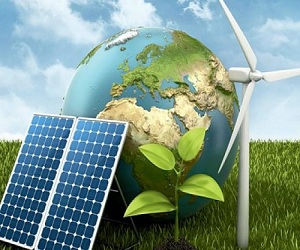
The Green Economy can be thought of which is low carbon, resource efficient and socially inclusive. It is closely related to ecological economics but has a more politically applied focus. A low-carbon economy also known as the low-fossil-fuel economy or the decarbonized economy is an economy based on low carbon power sources that therefore has a minimal output of greenhouse gas emissions into the environment biosphere, but specifically refers to the greenhouse gas carbon dioxide. Greenhouse gas emissions due to anthropogenic activity are increasingly either causing global warming or making climate change wors.
- Recycling role in Green Economy
- Macroeconomics
- Emission Reduction
- Analysis of Challenges and Opportunities in Green Sectors
- Sustainable Agriculture
Track 9: Market Research on Green Energy
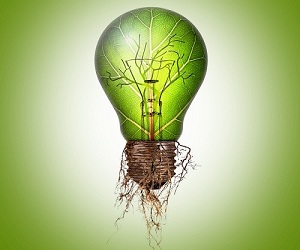
Green Energy mainly involves natural energetic processes which will be controlled with very little pollution. Anaerobic digestion, geothermic power, wind power, small-scale hydropower, solar power, biomass power, periodic event power, wave power, and a few styles of atomic power belongs to the green energy. Some definitions may embody power derived from the combustion of waste. In many countries with business concern arrangements, electricity marketing arrangements build it possible for customers to buy green electricity from either their utility or a green power supplier. Once energy is purchased from the electricity network, the ability reaching the buyer won't essentially be generated from Green energy sources. The native utility company, utility, or state power pool buys their electricity from electricity producers World Health Organization could also be generating from fuel, nuclear or renewable energy sources.
- Application of Renewable Energy
- Entrepreneurs & Investment meets
Track 10: Green Technology & Energy science

Green technology is also used to describe sustainable energy generation technologies such as photovoltaic, wind turbines, bioreactors, etc. with an ultimate goal of sustainable development. Its main objective is to find ways to create new technologies in such a way that they do not damage or deplete the planet’s natural resources and aid in the reduction of global warming, greenhouse effect, pollution and climate change. The global reduction of greenhouse gases is dependent on the adoption of energy conservation technologies at the industrial level as well as this clean energy generation. That includes using unleaded gasoline, solar energy and alternative fuel vehicles, including plug-in hybrid and hybrid electric vehicles.
- New Energy Applications
- Electric Vehicles
- Hydrogen and Fuel cells
- Development and Utilization of Solar Energy
- Development and Utilization of Biomass Energy
- Development and Utilization of Wind Energy
- Nuclear Energy Engineering
- Energy Chemical Engineering
- Energy Security and Clean Use
- Energy-efficient Lighting Products and Technologies
Track 11: Bioremediation
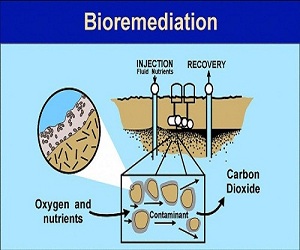
Now a day’s bioremediation technologies are going to be classified as in-situ or ex-situ. In in-situ bioremediation also involves treating the contaminated material at the location, whereas ex-situ involves the removal of the contaminated material to be treated elsewhere. In bioremediation would occur on its natural attenuation or may exclusively effectively occur through the addition of fertilizers, oxygen, etc., it leads to facilitate encourage the growth of the pollution-eating microbes at intervals the medium. However, not all contaminants unit of measurement merely treated by bioremediation using microorganisms.
- Bioaugmentation
- Genetic Engineering Approaches
- Mycoremediation
- Phytoremediation
- Bioleaching
Track 12: Green Engineering
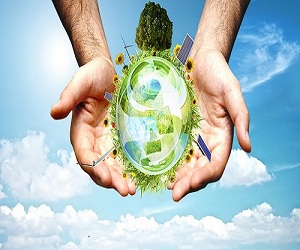
It advances the design of products and processes by applying technologically and financially practicable processes and products in a manner that simultaneously decreases the amount of pollution that is generated by a source minimizes exposures to potential hazards as well as protecting human health without relinquishing the economic efficiency and viability. Use life-cycle thinking in all engineering activities as such, green engineering is not actually an engineering discipline in itself, but an overarching engineering framework for all design disciplines.
- Efficient use of mass like energy, space & time
- Sustainability throughout product lifecycle
- Principles of Green Engineering
- Innovations in Green Engineering
- Industrial application of Green Engineering
Track 13: Energy and Environment

It is a technical congregation where the latest theoretical and technological advances are presented and discussed. Energy and environment are related to the technological and scientific aspects including energy conservation, and the synergy of energy forms and systems with the physical environment. The levels of atmospheric carbon dioxide have risen by 31% between 1800 and 2000, going from 280 parts per million to 367 parts per million. Scientists predict that co2 levels could be as high as 970 parts per million by the year 2100. Different factors are responsible for this development, such as promotion with respect to technical parameters of energy converters, in particular, improved efficiency; discharge characteristics and increased lifetime. Various environmental policies have been implemented across the world for reduction of GHG emissions for improvement of the environment.
- Climate Change
- Environmental Hydraulics
- Sustainable Development
- Remote Sensing
- Environmental Ergonomics
- Computational Techniques
- Air pollution from mobile and stationary sources
- Ecology and Biodiversity Conservation
Track 14: Renewable Energy
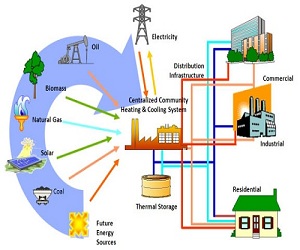
The Renewable Energy source, as opposed to petroleum products, offers critical general medical advantages. The air and water contamination transmitted by coal and gaseous petrol plants are connected to breathing issues, neurological harm, heart assaults, and disease. Supplanting petroleum products with sustainable power source has been found to diminish untimely mortality and lost workdays, and it lessens general human services costs. The total national monetary effect related to these wellbeing effects of petroleum derivatives is amongst $361.7 and $886.5 billion, or between 2.5% and 6% of (GDP).
- Wind Energy
- Power and Energy Engineering
- Smart Grid
- Green Energy and Economy
- Environmental Impact Assessment
Track 15: Global warming
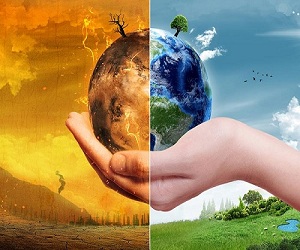
The majority of the world’s energy needs are met by burning hydrocarbon-based fossil fuels. Addition to requiring non-renewable natural resources that will eventually be depleted, this method of energy production produces greenhouse gases that contribute to climate change, releases toxic gases that comprise to smog that plagues cities, and requires expensive and often highly-polluting methods of fuel extraction, refining, and transport. Some of these problems have grown more pressing as fossil fuels have become scarcer, requiring drilling in more remote locations, use of less-ideal raw materials such as tar sands that require more intensive processing, and increasingly complex extraction techniques such as fracking.
- Climate Change
- Pollution
- Natural Hazards
- Natural Gas Recovery
- GIS and Remote Sensing
Track 16: Bioenergy

It is renewable energy made available from materials derived from biological sources. Though wood is still our largest biomass energy resource, the other sources which can be utilized include plants, residues from agriculture or forestry, and the organic component of municipal and industrial wastes. Even the fumes from landfills can be used as a biomass energy source. Biohydrogen is a potential biofuel obtainable from both cultivations and from waste organic materials. Though hydrogen is produced from non-renewable technologies such as steam reformation of natural gas (~50% of global H2 supply), petroleum refining (~30%) and gasification of coal (~20%), green algae (including Chlamydomonas reinhardtii) and cyanobacteria offer an alternative route to renewable H2 production.
- Green Energy in Transport
- Green Industrial Technology
- Green Power
- Rural Development through Green Energy
- Green energy and social benefits
- Income generation with green energy
- Greening Urbanization and Urban Settlements
- Greenhouse gas abatement costs and potentials
Track 17: Biomass and Biofuels
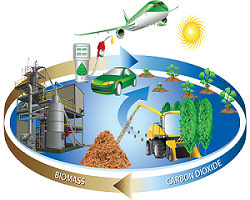
Natural sources for energy production are becoming extinct day by day. The main reason behind biomass energy production is that it can be produced from wood, plant and animal wastes, forestry wastes which indicate that biomass can be produced from those materials that are regarded as waste materials which are again re-used and energy are produced. It will not emit any harmful gases, produces clean energy, abundant and renewable, and reduces the usage of fossil fuels for energy production and also it can be used to create different products. The main reason behind biomass usage is it reduces the emission of greenhouse gases. It is also regarded as a most important renewable source of energy because it can be used as an alternative source for energy production.
A biofuel is a fuel that is produced through contemporary biological processes, such as agriculture and anaerobic digestion, rather than a fuel produced by geological processes such as those involved in the formation of fossil fuels, such as coal and petroleum, from prehistoric biological matter. It also derived directly from plants, or indirectly from agricultural, commercial, domestic, and industrial wastes. Renewable biofuels generally involve contemporary carbon fixation, such as those that occur in plants or microalgae through the process of photosynthesis.
- Biomass Conversion Methods
- Biomass Applications
- Biomass Energy Resources
- Supply Chain Management
- Environmental Impact of Biomass
- Biomass Market Analysis
- Landfill Gas as a Renewable Energy Resource
- Biomass from Microbial Sources
- Biodiversity
- Bioethanol
- Biobutanol
- Biochar
- Biorefinery
- Aviation Biofuels
- Biodiesel
- Algae Biofuels
Market Analysis
Summary:
Environmental Technology, Green Technology or Clean Technology is the application of one or more of environmental science, green chemistry, environmental monitoring and electronic devices to monitor, model and conserve the natural environment and resources, and to curb the negative impacts of human involvement. The term is also used to describe sustainable energy generation technologies such as photovoltaics, wind turbines, bioreactors, etc. Sustainable development is the core of environmental technologies.
Governments around the world are working towards the development and implementation of clean and green technology for industrial use. This report will study the impact of green technologies on the food and beverage sector. It will also profile key players, provide market data and forecast for the next five years along with the latest technological developments.
The phrase “Green Technology” generally refers to the application of advanced systems and services to a wide variety of industry sectors in order to improve sustainability and efficiency. These improvements could include: reduction of waste, spoilage and shrinkage; improvement of energy efficiency and energy conservation; creation of systems that are energy self-sustaining; the reduction of carbon emissions; a reduction in toxic waste and the emission of toxic gasses such as volatile organic compounds; creation of products that are biodegradable; enhancement of water conservation and water quality.
Determining the size of the Green Technology Market:
A large number of companies, in a very wide variety of industries, deliver green tech products or services as at least a part of their total offerings, but the actual revenues are difficult to ascertain.
Many small and startup companies are involved as well.
Considered in the broadest possible terms for green tech activities, products, and services of all types, Research estimates the green tech sector to represent about 5% of global GDP for 2016, or approximately $3.78 trillion.
The energy sector, in all of its many facets, is unquestionably a major part of the green tech field.
Bloomberg New Energy Finance counted, as of 2015, more than 600 publicly-held companies worldwide in the clean energy value chain.
GreenTech Industry Statistics and Market Size Overview:
Estimated Global Green Technology Industry Revenues:
- National R&D Expenditures & R&D as a Percentage of GDP, by Country: Selected Years, 1985-2014
- Federal R&D Funding by Character of Work and Facilities and Equipment, U.S.: Fiscal Years 2015-2017
- Federal R&D & R&D Plant Funding for General Science & Basic Research, U.S.: Fiscal Years 2015-2017
- Share of Electricity Generation by Energy Source, U.S.: Projections, 2015-2040
- Federal R&D & R&D Plant Funding for Agriculture, U.S.: Fiscal Years 2015-2017
- Fuel Ethanol Production & Consumption, U.S.: 1981-July 2016
- Federal Funding for Research, by Agency & Field of Science & Engineering, U.S.: Fiscal Year 2015
- Energy Production by Renewable Energy, U.S.: Selected Years, 1950-2016
- Renewable Energy Consumption by Source, U.S.: Selected Years, 1950-2016
- Renewable Energy Consumption in the Residential, Commercial & Industrial Sectors, U.S.: 2009-2016
- Renewable Energy Consumption in the Transportation & Electric Power Sectors, U.S.: 2009-2016
Industry Trends Analyzed Include:
- Demand for Green Technologies and Conservation Practices Evolves, Fueling Investment and New Product Development
- The Developed World Shows Dramatic Improvements in Carbon Dioxide (CO2) Emissions/China Sets Ambitious Carbon Goals
- Water Conservation Technologies to Enjoy Tremendous Growth/China Targets Desalination
- Recycling Flourishes/Gasification Technology Looks Promising
- Food Waste on the Rise/Recycling Efforts Underway
- Biomass, Waste-to-Energy, Waste Methane and Biofuels from Algae
- Lighting Technologies, LEDs, and CFLs Conserve Energy and Offer New Product Development Potential
- Smart Cities Increase Efficiencies of All Kinds
- Packaging Technology Improves/Wal-Mart and Coca-Cola Boost Packaging Sustainability
- Energy Intensity Is a Prime Focus in China/U.S. Achieves Dramatic Energy Intensity Results
- Interest in Geoengineering Grows
- Environmentalists Campaign for Chemical Industry Reform
- Homes and Commercial Buildings Seek Green Certification
- Major Research and Advancements in Lithium Batteries/Tesla and Panasonic Plan Gigafactory
- Nanotechnology Sees Applications in Fuel Cells and Solar Power/Micro Fuel Cells to Power Mobile Devices
- Fuel Efficiency Continues to Improve/ Stiff MPG Standards Adopted in the U.S. (CAFE Rules) and Abroad
- Car-Sharing Programs (Short-Term Rentals), AKA Mobility Services, Proliferate
- Smart Electric Grid Technologies Are Adopted
- The Energy Industry Invests in Storage Battery Technologies with an Eye on Distributed Power and Renewables
- Electric Utilities Adopt Coal Emissions Scrubbers While the Industry Tests Carbon Capture and Clean Coal Technologies
- Bio-plastics Become a Reality/Plastic Packaging Made from Corn and Soy
- Agriculture Technologies (AgTech) and Irrigation Market Grows Worldwide/Hi-Tech Greenhouses Become Commercial
The report on the global green technologies market provides a descriptive outlook on all the solutions that can be utilized in salvaging the current structure of technologies and move towards more eco-friendly means. It helps visualize a market trajectory intended to create feasible means for market players to follow.
The global green technologies market tackles the growing global concern over the reduction of carbon emission rates and the rise in the world’s temperature. This can be achieved through the introduction of the concepts green buildings, green energy efficiency, green manufacturing, green nanotechnology, clean fuels, efficient recycling, and fuel-efficient transportation. The market is expected to play a critical role in balancing the environment.
The report creates a complete map of the global green technologies market in terms of the key players, providing the competitive landscape in order to guide a user in making the most successful business strategy. The report incorporates macro and micro factors in order to complete this visualization of the global green technologies market. Porter’s Five Force analysis and the SWOT analysis are two of the proven analytical methods conducted by the analysts of the report to provide existing players as well as new entrants the details of the global green technologies market’s value chain.
Overview of the Global Green Technologies Market:
The global green technologies market follows a certain set of goals, mostly oriented toward the creation of sustainable tech that does the least harm to the environment. These goals are based on source reduction, which helps create changes in manufacturing as well as consumption patterns to cut back on the generation of waste and pollutants. Another major goal is sustainability, which allows companies to achieve their production goals without compromising on the overuse of resources. Other goals include the incorporation of: “cradle to grave” design, which means products created can be used, reused, and reclaimed innovation. This helps in the development of alternatives to conventional tech that can damage the environment, and viability, which helps manufacturers in product development that supports resource-conservative and eco-friendly means.
Wind and solar energy are at the top of the global green technologies market. Both energy sectors have already made large investments in R&D and have already initiated sustainable ventures in energy generation. In 2014, the global green technologies market witnessed a 14% increase in investments. China played a major role in the global green technologies market in terms of investments, followed by Japan and the U.S.
Companies mentioned in the research report:
Key players in the global green technologies market are General Electric, Siemens, Nissan, Aleo Solar, Panasonic, Clean Power Investor, Suzlon, Gamesa, Sharp Solar, and First Solar. The market has been witnessing an increase in activities in recent times. For instance, Shell Canada, in collaboration with Canadian Geographic, is planning to grant more than US$36,000 each to seven Canadian climate entrepreneurs as a part of the Quest Climate Grant. The grant will be given to the seven candidates with the best green technology concepts.
Major regions analyzed under this research report are:
- Europe
- North America
- The Asia Pacific
- Rest of the World
This report gives you access to decisive data such as:
- Market growth drivers
- Factors limiting market growth
- Current market trends
- Market structure
- Market projections for the coming years
Key highlights of this report:
- Overview of key market forces propelling and restraining market growth
- Up-to-date analyses of market trends and technological improvements
- Pin-point analyses of market competition dynamics to offer you a competitive edge
- An analysis of strategies of major competitors
- An array of graphics and SWOT analysis of major industry segments
- Detailed analyses of industry trends
- A well-defined technological growth map with an impact-analysis
- Offers a clear understanding of the competitive landscape and key product segments
Learn More
Green Technologies Conferences:
4th Sustainable Development Conferences, 20 - 22 June, 2018, Naples, Italy; Euroscicon; Euroscicon Conferences; 2nd Remote Sensing Conferences, October 2-3, 2017, Vienna, Austria; 3rd Green Energy Conferences, September 28-29, 2017, Berlin, Germany; 4th Climate Change Conferences, October 19-21, 2017, Rome, Italy;Euroscicon Conferences 8th Recycling Conferences, November 12-14, 2018, Berlin, Germany; Soil Sciences Conferences, Dec 4-5, 2017, Madrid, Spain; Euroscicon; Ecology Conferences, March 19-20, 2018, Berlin, Germany; Euroscicon; 10th Recycling Conferences May 24-25, 2018 Stockholm, Sweden; Climate Change Conferences, November 19-20, 2018 Lisbon, Portugal; 2nd Pollution Control Conferences, October 5-6, 2017, London, UK;Euroscicon Conferences; Global Warming Conferences, September 11-13, 2017 Brussels, Belgium; 22nd Therapeutics Conferences, September 11-12, 2017 Paris, France; 4th Recycling Conferences July 27-29, 2017 Rome, Italy; Pollution Control Technologies Conferences, Jan 21-22, 2019 London, UK.
Euroscicon Conferences, 3-7 December 2018, Washington, USA; Euroscicon;17th Behavioural Ecology Conferences, 11-17 August 2018, Minnesota, USA;Euroscicon Conferences 2018 Salish Sea Ecosystem Conferences,4-6 April 2018, Washington, USA; Ecology and Ecosystems Conferences September 18-20, 2017 Toronto, Canada; Euroscicon; Euroscicon Conferences.
Marine Ecosystem Conferences, 09-13 April 2018, Tasmania, Australia; Euroscicon; Euroscicon Conferences; 3rd Climate Change and Global Warming Conferences October 16-17, 2017 Dubai, UAE; 6th Biodiversity and Conservation Conferences, April 27-28, 2017 Dubai, UAE; Euroscicon; Euroscicon Conferences; 6th Earth Science and Climate Change Conferences, September 18-19, 2017 Macau, Hong Kong; Environment Pollution and Prevention Conferences, Dec 25-27, 2016 Kyoto Japan; Green Technology Conferences, Jan 06-07, 2017 Kota Kinabalu, Malaysia; Euroscicon; Euroscicon Conferences
Top Green Technologies Universities Worldwide:
Green Technologies Universities in Europe:
Universitat Politecnica de Catalunya, Spain | University of Oldenburg, Germany | Euroscicon | The University of Modena and Reggio Emilia, Italy | Université de Bourgogne Franche-Comté, France | University of Porto, Portugal | Southern Federal University, Russia | Euroscicon | University of Leon, Spain | Royal Scientific Society, Jordan | Euroscicon Conferences | Middlesex University School of Art & Design, UK | French National Center for Scientific Research, France | Czestochowa University of Technology, Poland | Institut für Materialprüfung und Werkstofftechnik, Germany | University of Birmingham, UK | Aalborg University Esbjerg, Denmark | Mediterranea University, Italy | University Hamburg, Germany | Lille North of France University, France | Cranfield University, UK | The University of Pretoria, Republic of South Africa | Gdansk University of Technology, Poland | Euroscicon | Euroscicon Conferences
Green Technologies Universities in Asia:
Korea Environment Corporation, Korea | Euroscicon | Chinese Academy of Sciences, China | Korea Institute of Ceramic Engineering and Technology, South Korea | Beijing University of Technology, China | Euroscicon | Korea Land & Housing Corporation, South Korea | Team Labs and Consultants, India | Euroscicon | Harbin Institute of Technology, China | Tohoku University, Japan | Waseda University, Japan | Hong Kong University of Science and Technology, China | Banaras Hindu University, India | Euroscicon | Euroscicon Conferences.
Green Technologies Universities in USA:
University of Tasmania | Euroscicon | Charles Sturt University | Monash University | National Autonomous University | Euroscicon | Euroscicon Conferences | Groupe CTT | Florida International University | Victoria University | Euroscicon | Euroscicon Conferences.
Green Technologies Related Societies:
Green Technologies Related Societies in Europe:
European Association of Environmental and Resource Economists | Euroscicon | Euroscicon Conferences | Whale and Dolphin Conservation Society | WOLF Forest Protection Movement | Finnish Association for Nature Conservation | Swiss Association for the Protection of Birds | Fund for Wild Nature | North American Native | Environmental Justice Foundation | Environmental Law Foundation | The Civic Trust | Euroscicon | Euroscicon Conferences
Green Technologies Related Societies in America:
Geothermal Energy Association | Euroscicon | Euroscicon Conferences | Solar Energy Industries Association | Association of Environmental Professionals | North American Native Fishes Association | African American Environmentalist Association | National Parks Conservation Association | National Registry of Environmental Professionals | National Wildlife Refuge Association | Euroscicon | One World One Ocean, California | Public Employees for Environmental Responsibility | Euroscicon | Euroscicon Conferences.
Green Technologies Related Societies in Asia-Pacific:
Vindhyan Ecology and Natural History Foundation | Euroscicon | Euroscicon Conferences | Geoecology Energy Organization | Irish Peatland Conservation Council | National Trust for Nature Conservation | Nature Conservation Society of Japan | Association for Geo-conservation | Society for Protection of the Harbour | The Conservancy Association | Worldwide Fund for Nature | Environmentalist Foundation of India | Euroscicon | Euroscicon Conferences
Geothermal Energy Open Access | Journal of the Energy Institute | Euroscicon | Euroscicon Conferences | International Journal of Energy Research | International Journal of Air-Conditioning and Refrigeration | Sustainable Energy, Grids and Networks | Energy and Environmental Sciences | Advanced Energy Materials | Energy Storage Materials | Energy Conversion and Management | Progress in Photovoltaics: Research and Applications | Environmental and Climate Technologies Open Access | Biotechnology for Biofuels Open Access | Journal of Power Sources | Energy Research and Social Science | GCB Bioenergy Open Access | Renewable Energy | International Journal of Precision Engineering and Manufacturing - Green Technology | Euroscicon | Polymr Reviews | Journal of Cleaner Production | Solar Energy Materials and Solar Cells | Annual Review of Chemical and Biomolecular Engineering | Solar Energy | ACS Sustainable Chemistry & Engineering | Energy for Sustainable Development | Environmental Innovation and Societal Transitions | Euroscicon | Journal of Unconventional Oil and Gas Resources | Euroscicon | Biomass and Bioenergy | Sustainable Materials and Technologies Open Access | International Journal of Hydrogen Energy | Journal of the Electrochemical Society | Journal of Modern Power Systems and Clean Energy Open Access | Biofuels, Bioproducts and Biorefining | Wind Energy | Sustainable Energy Technologies and Assessments | Sustainable Development | Journal of Wind Engineering and Industrial Aerodynamics | IET Renewable Power Generation | International Journal of Sustainable Transportation | Geothermics | Bioenergy Research | Sustainable Cities and Society | Euroscicon | Sustainable Energy Technologies and Assessments | Sustainable Development | Journal of Wind Engineering and Industrial Aerodynamics | IET Renewable Power Generation | International Journal of Sustainable Transportation | Geothermics | Euroscicon | Energy and Environment | Journal of Chemical Technology and Biotechnology | Journal of Photonics for Energy | Nano Energy | Food and Energy Security | Renewable and Sustainable Energy Reviews | Journal of Materials Chemistry A | IEEE Transactions on Sustainable Energy | Environmental Research Letters Open Access | Euroscicon | Euroscicon Conferences.
Green Technologies jobs in Europe:
Landscape Architect | Euroscicon | Euroscicon Conferences | Nuclear Engineer | Petroleum Engineer | Petrologist | Resource Manager | Soil Conservation Technician | Solar Engineer | Turf Scientist | Euroscicon | Euroscicon Conferences | Water Resource Engineer | Watershed Science Technician | Wetland Specialist | Euroscicon | Euroscicon Conferences | Wind Energy Engineer | Environmental Supervisor | Conservation Project Planner | Lecturer (Environmental Science/Biology) | Wind Technician | Renewable Energy Systems Engineer | Energy Storage Origination and Development | Senior Project Engineer – Solar | Solar Technician Solar Installers | Euroscicon | Euroscicon Conferences | Conservation Project Planner | Restoration & Outreach Coordinator | Agricultural Program Specialist | Natural Resources Director | Euroscicon | Community Forester | Southeast Regional Manager | Euroscicon | Euroscicon Conferences | Trail Planner Coordinator | Product Support Engineer | Euroscicon | Manager Analytics | Quality Manager | QC Manager | Biophysical Analyst | Biophysical Analyst | Analytical Project Leader | Scientist II | Programme Manager recruitment solutions | Junior Technical Sales Consultant | Analytical Services Manager | Analytical Development Scientist | Analytical Development Scientist | Specialist in the area of analytical chemistry to Water Technologies-Baxter | Analytical Chemistr | Euroscicon | Euroscicon Conferences
Green Technologies jobs in USA:
Agroforestry | Air Quality Forecaster | Euroscicon | Aquarist | Aquatic Biologist | Euroscicon Conferences | Biofuel Production Operator | Euroscicon | Chemical Engineer | Ecotourism Guide | Energy Manager | Euroscicon | Environmental Public Relations Specialist | Euroscicon | Geophysical Engineer | Geoscientist | Hydrographic Surveyor | Solutions | Analytical Chemist | Scientist I | Chemist- Analytical | Analytical Separations | Chemist | Assistant Professor | Scientist | Expert Scientist Separation Sciences & Sizing | Forensic Chemistry Analyst III | Euroscicon | Euroscicon Conferences.
Green Technologies Jobs in Asia and the Middle East:
Agroforester | Euroscicon | Air Quality Forecaster | Aquarist | Euroscicon Conferences | Aquatic Biologist | Euroscicon | Biofuel Production Operator | Chemical Engineer | Euroscicon | Ecotourism Guide | Energy Manager | Environmental Public Relations Specialist | Geophysical Engineer | Geoscientist | Hydrographic Surveyor | Landscape Architect | Nuclear Engineer | Petroleum Engineer | Euroscicon | Euroscicon Conferences.



































